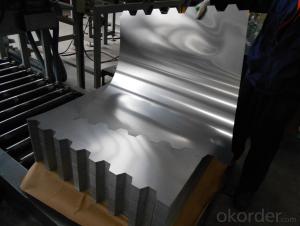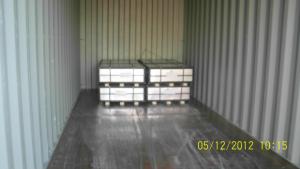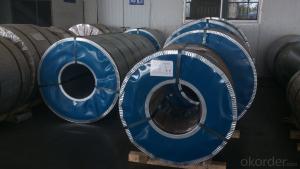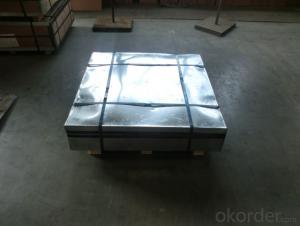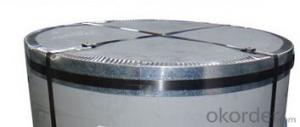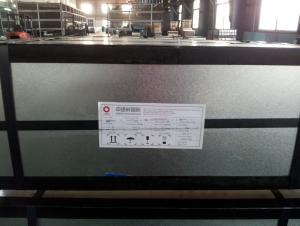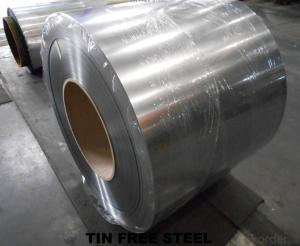TFS-TIN FREE STEEL SHEET
- Loading Port:
- China Main Port
- Payment Terms:
- TT OR LC
- Min Order Qty:
- -
- Supply Capability:
- -
OKorder Service Pledge
Quality Product, Order Online Tracking, Timely Delivery
OKorder Financial Service
Credit Rating, Credit Services, Credit Purchasing
You Might Also Like
Package details:
Rust-proof paper+thin plastic film+cardboard+galvanized iron+mental band+wooden pallet. Laded into 20 feet container with max weight 25 tons

- Q: What are the advantages of using tinplate for paint cans?
- There are several advantages of using tinplate for paint cans. Firstly, tinplate is highly durable and provides excellent protection against corrosion, ensuring the longevity of the paint. Secondly, tinplate is lightweight, making it easier to handle and transport the cans. Additionally, tinplate is non-reactive, meaning it won't interact with the paint, preserving its quality and preventing any chemical reactions. Lastly, tinplate is a sustainable and recyclable material, making it an environmentally friendly choice for packaging paint.
- Q: Is tinplate resistant to corrosion?
- Yes, tinplate is resistant to corrosion due to its protective tin coating which prevents the steel underneath from coming into contact with moisture or oxygen, thus preventing rusting.
- Q: What are the main countries producing tinplate?
- The main countries producing tinplate are China, Japan, South Korea, and the United States.
- Q: Can tinplate be used for electrical enclosures?
- Yes, tinplate can be used for electrical enclosures. Tinplate is a type of steel coated with a thin layer of tin, which provides excellent protection against corrosion. This makes it a suitable material for electrical enclosures as it ensures durability and helps maintain the integrity of the enclosed electrical components. Additionally, tinplate is relatively lightweight and cost-effective, making it a popular choice for various industrial applications, including electrical enclosures.
- Q: What are the different types of tinplate edge finishes?
- There are primarily three types of tinplate edge finishes: open top, tight top, and double tight top.
- Q: How is tinplate used in the food industry?
- Tinplate is commonly used in the food industry for packaging purposes. It is a thin steel sheet coated with a layer of tin, which provides a protective barrier against corrosion and maintains the quality and freshness of food products. Tinplate cans and containers are widely used for packaging canned fruits, vegetables, meat, fish, and other processed food items. The tin coating also prevents any interaction between the food and the metal, ensuring that the taste, flavor, and nutritional value of the food are preserved. Additionally, tinplate is easy to sterilize, making it suitable for products that require high levels of hygiene and long shelf-life, such as canned soups and sauces.
- Q: How does tinplate perform in terms of puncture resistance?
- Tinplate performs exceptionally well in terms of puncture resistance. Its sturdy and durable properties make tinplate highly resistant to punctures, ensuring the protection and integrity of the packaged contents.
- Q: Can tinplate be used for electrical applications?
- Yes, tinplate can be used for electrical applications. Tinplate, which is a thin sheet of steel coated with a layer of tin, offers good electrical conductivity and corrosion resistance. It is commonly used in the manufacturing of electrical components, such as transformers, capacitors, and circuit boards, due to its ability to provide a protective barrier against oxidation and improve solderability.
- Q: Can tinplate be used for non-packaging applications?
- Yes, tinplate can be used for non-packaging applications. Tinplate's properties such as durability, corrosion resistance, and versatility make it suitable for various non-packaging uses such as automotive parts, electrical components, construction materials, and more.
- Q: How does tinplate contribute to the safety of toys?
- Tinplate contributes to the safety of toys by providing a protective coating that prevents direct contact between the toy and any potentially harmful substances. This coating acts as a barrier against corrosion, ensuring that the toy remains safe and free from any toxic materials that may be present in the metal or paint used. Additionally, tinplate is durable and resistant to damage, reducing the risk of children being exposed to sharp edges or broken pieces.
Send your message to us
TFS-TIN FREE STEEL SHEET
- Loading Port:
- China Main Port
- Payment Terms:
- TT OR LC
- Min Order Qty:
- -
- Supply Capability:
- -
OKorder Service Pledge
Quality Product, Order Online Tracking, Timely Delivery
OKorder Financial Service
Credit Rating, Credit Services, Credit Purchasing
Similar products
Hot products
Hot Searches
Related keywords
